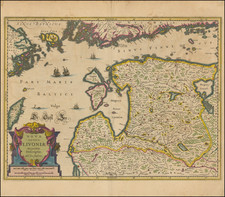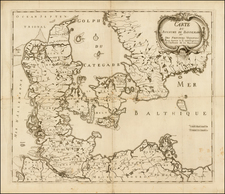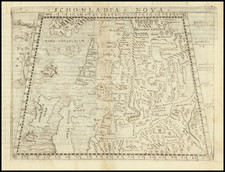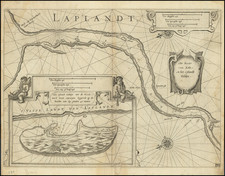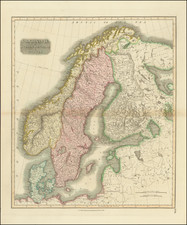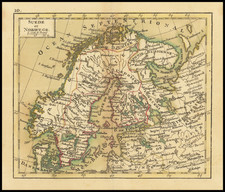Fascinating map by Athanasius Kircher, a 17th-century Jesuit scholar, illustrating the hydrodynamic phenomena of ocean currents and vortexes, particularly in the North Sea and the Gulf of Bothnia.
Kircher's maps are a testament to the early scientific attempts to understand and represent the forces of nature. The title, "Descriptio Vorticis Norvegiae et Bothniae eorumque mirabilium effectuum, quos in fluxu et reflecus operantur," translates to "Description of the Vortexes of Norway and Bothnia and their marvelous effects, which they produce in the flow and ebb."
Kircher hypothesized that tides and currents were caused by water flowing in and out of underground tunnels, creating whirlpools and vortexes. The map includes geographical regions affected by these currents, such as the east coast of England, the Baltic Sea, Denmark, Westphalia, Finland, Norway, and Sweden, demonstrating the breadth of impact these natural phenomena were believed to have.
The Latin text discusses the irregularities of the tides influenced by the moon's movement, which causes the sea to swell. It describes a complex system of tidal movements that can vary in different quadrants of the sea, suggesting that tides can rise or fall simultaneously or alternatively in different locations. This description aligns with Kircher's interests in natural philosophy and the dynamics of water movement, which he saw as a universal principle applicable to various marine contexts.
The passage further explains that this principle can be observed in specific locations, such as in the Gulf of Bothnia, where the tidal effects can be seen to fluctuate differently on the eastern and western shores due to the water's general flow and subsequent impact on the coastline. Kircher posits that the same logic can be applied to understand the diverse tidal phenomena observed across different shores and islands.
Kircher's work was groundbreaking for its time, attempting to synthesize observational data and theoretical knowledge about the natural world. His maps and writings contribute significantly to the history of cartography and oceanography, even though his theories have since been superseded by more modern understandings of ocean currents and tides. Nonetheless, the map serves as a historical document, capturing the state of scientific knowledge and the imaginative attempts at explaining complex natural phenomena during the 17th century.
Athanasius Kircher (1601-1680) was a Jesuit priest and a well-respected scholar known for his role in disseminating knowledge. Kircher was educated in Greek, Hebrew, and the humanities at Fulda, Paderborn, Cologne, Koblenz, and Mainz. After fleeing the Thirty Years’ War in Germany, Kircher worked as an academic at Avignon and, from 1634, Rome.
In Rome, Kircher served as an intellectual node, spreading information sent from around the world by Jesuit missionaries. Particular interests included ancient Egypt, astronomy, mathematics, medicine, music, and languages (both ancient and modern). He also made several maps and was a geographic compiler. It is likely he was the first person to depict the Pacific Ring of Fire on a map.
Kircher combined a mixture of hermeticism with nascent scientific inquiry, gaining him a reputation as one of the final Renaissance men. For example, he observed the eruptions of Etna and Stromboli. He had himself lowered into the crater of Vesuvius soon after an eruption to observe the changes wrought by the cataclysm. He experimented with bioluminescence by seeking the applications of firefly extract as a light source. He also made the first known Aeolian harp.
Kircher wrote 44 books, while over 2,000 of his manuscripts and letters survive. He also assembled one of the first natural history collections, the Museo Kircheriano or the Kircherianum, which was broken up after his death and became the foundation of several institutional collections.









